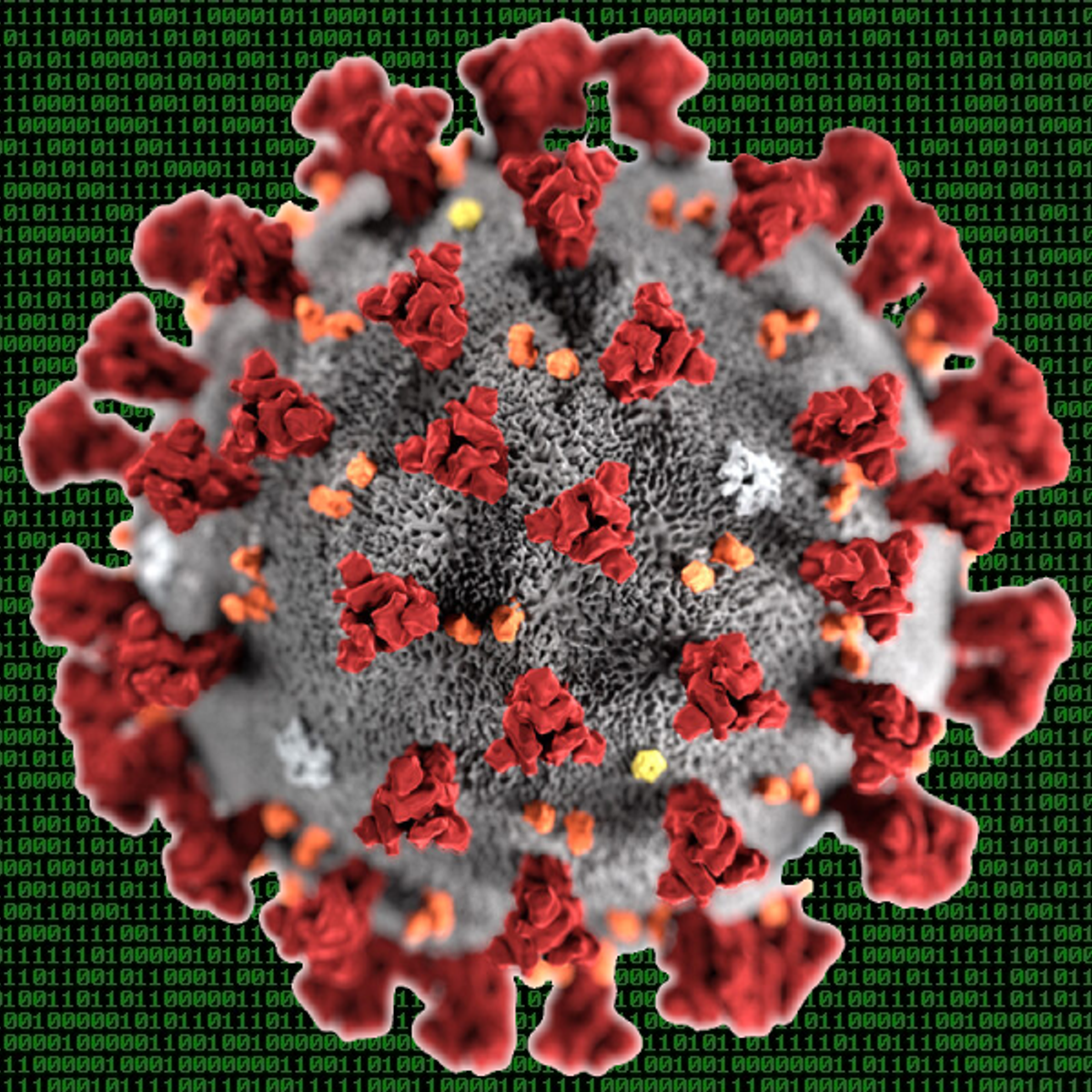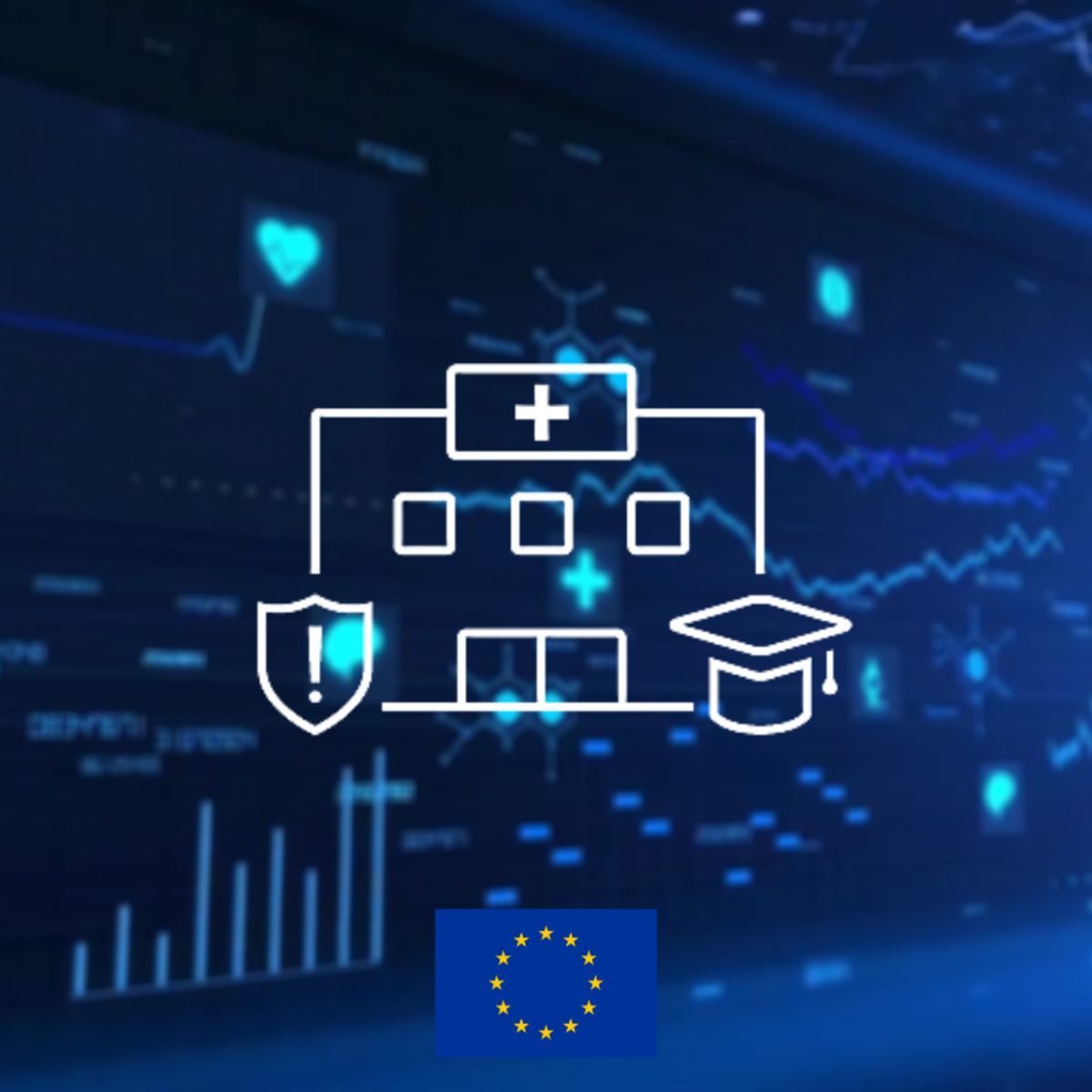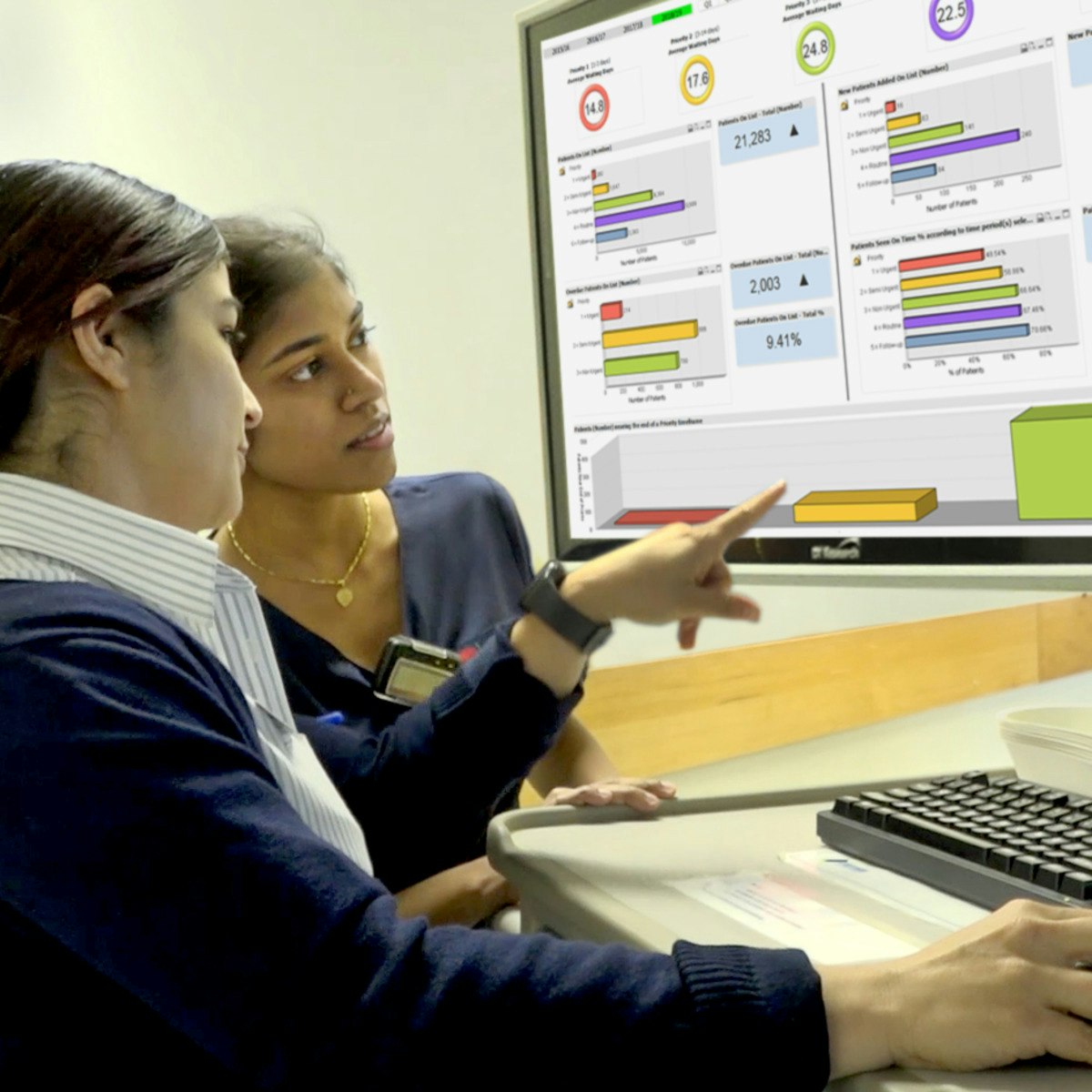Back to Courses









Health Informatics Courses - Page 2
Showing results 11-20 of 93

Social Determinants of Health: Planetary Health
This fifth and final course is centered on planetary health as a fundamental health determinant. As we consider how the health of humans is dependent on the health of Earth’s natural systems, we will also explore how to apply futures thinking and foresight principles to planetary health initiatives. The topics of this course include:
1. Introduction to Planetary Health
2. Values and Sources of Knowledge
3. Action and Movement Building
4. Foresight
5. Data Applications: Regression Analysis and Scatter Plot Visualization

Hacking COVID-19 — Course 1: Identifying a Deadly Pathogen
In this course, you will follow in the footsteps of the bioinformaticians investigating the COVID-19 outbreak by assembling the SARS-CoV-2 genome. Whether you’re new to the world of computational biology, or you’re a bioinformatics expert seeking to learn about its applications in the COVID-19 pandemic, or somewhere in between, this course is for you! As you go through this journey, we will introduce and explain genomic concepts and give you many opportunities to practice your skills, and we will provide a series of problems with gradually increasing complexity. This first course will only discuss the assembly of the SARS-CoV-2 genome, but future courses in this series will explore follow-up bioinformatics analyses used in the COVID-19 pandemic.

Leading Change in Health Informatics
Do you dream of being a CMIO or a Senior Director of Clinical Informatics? If you are aiming to rise up in the ranks in your health system or looking to pivot your career in the direction of big data and health IT, this course is made for you. You'll hear from experts at Johns Hopkins about their experiences harnessing the power of big data in healthcare, improving EHR adoption, and separating out the hope vs hype when it comes to digital medicine.
Whether you're a nurse, pharmacist, physician, other allied health professional or come from a non-clinical background--you know that Health Informatics skills are in demand. This newly launched 5-course specialization by JohnsHopkins faculty members provides a solid foundation for anyone wanting to become a leader in one of the hottest fields in healthcare.
As health informaticians, we need to be very clear in our understanding of the current state (as-is), the future state (to-be) and any unintended consequences that can result from our interventions. Prior to introducing large scale change, we need to assess whether a healthcare organization is truly ready for change. This involves taking into account an organization's current culture and values. Successfully leading change through health informatics also requires strategic planning and careful financial considerations. Proper workflow redesign and a clear change management strategy are of utmost importance when introducing new technologies and in ensuring their successful adoption and proper use.
By the end of this course, students will become familiar with examples of successful and failed attempts at change in health informatics, and the reasons for each. Students will be armed with tools to help optimize their chances for successfully leading change in their respective organizations.

Cybersecurity in Healthcare (Hospitals & Care Centres)
The Cybersecurity in Healthcare MOOC was developed as part the SecureHospitals.eu project. This project has received funding from the European Union’s Horizon 2020 Coordination Research and Innovation Action under Grant Agreement No. 826497.
The course "Cybersecurity in Healthcare" has been developed to raise awareness and understanding the role of cybersecurity in healthcare (e.g., hospitals, care centres, clinics, other medical or social care institutions and service organisations) and the challenges that surround it. In this course, we will cover both theoretical and practical aspects of cybersecurity. We look at both social aspects as technical aspects that come into play. Furthermore, we offer helpful resources that cover different aspects of cybersecurity. Even if you are not active in the healthcare domain, you will find helpful tips and insights to deal with cybersecurity challenges within any other organisation or in personal contexts as well.
This course begins by introducing the opportunities and challenges that digitalisation of healthcare services has created. It explains how the rise of technologies and proliferation of (medical) data has become an attractive target to cybercriminals, which is essential in understanding why adequate cybersecurity measures are critical within the healthcare environment. In later modules, course contents cover the threats, both inside and outside of healthcare organisations like e.g. social engineering and hacking. Module 4 on Cyber Hygiene describes how to improve cybersecurity within healthcare organisations in practical ways. Module 5 looks deeper into how organisational culture affects cybersecurity, the cybersecurity culture, focusing on the interaction between human behaviour and technology and how organisational factors can boost or diminish the level and attention to cybersecurity in healthcare.
Do you work for a hospital, clinic, medical practice, care centre, care provider, social care organisation, or nursing home? Do you want to improve your personal or your organisation’s cybersecurity (cyber security, IT security, information security, network security, computer security, awareness)? Then please visit https://www.securehospitals.eu to gain access to a range of resources. You can also join the Security providers and Trainers platform (see: https://www.securehospitals.eu/for-providers-and-trainers/) or our Community of Practice (see: https://www.securehospitals.eu/community/).

Leadership in Interprofessional Informatics
In this course, students in the health and information technology professions will examine models for interprofessional collaboration and teamwork, practice communication techniques to promote effective interaction, and envision futures literacy in interprofessional informatics scenarios. We will hear from nurses and other informaticians who are leading and working interprofessionally, and glean insights from their diverse perspectives. When we think about the requisite variety of leadership skills that are essential in nursing informatics, we may deduce that leadership in interprofessional informatics will demand at least that diversity or more. We’ll expand our nursing informatics leadership vision to include interprofessional applications of the Competing Values Framework and the Minnesota Nursing Informatics Leadership Inventory.
For students who are interested in completing the specialization, there is a sixth module in this course dedicated to the creation of a portfolio which is peer reviewed. The purpose of the portfolio is to help students integrate, synthesize and document their learning through completion of the five course specialization.
Students will:
Define the term interprofessionality to support the development of an interprofessional informatics leadership skill set
Describe how the competing values framework supports knowledge leadership and interprofessional informatics practice to achieve collective impact in health care contexts
Explain the core competencies expected to support culturally-sensitive interprofessional practice to deepen leadership insights in interprofessional informatics
Discuss selected policy, practice, and standardization issues related to knowledge representation and framing to support interprofessional informatics practice
Analyze the future of interprofessional informatics leadership to develop an anticipatory leadership skill set
Using clinical health data for better healthcare
Digital health is rapidly being realised as the future of healthcare. While this is placing emphasis on the input of quality health data in digital records and systems, the delivery of safe and quality healthcare relies not only on the input of data, but also the ability to access and derive meaning from data to generate evidence, inform decision making and drive better health outcomes.
This course provides insight into the use of healthcare data, including an overview of best practices and the practical realities of obtaining useful information from digital health systems via the understanding of the fundamental concepts of health data analytics.
Learners will understand why data quality is essential in modern healthcare, as they are guided through various stages of the data life cycle, starting with the generation of quality health data, through to discovering patterns and extracting knowledge from health data using common methodologies and tools in the basic analysis, visualisation and communication of health data. In doing so, learners explore current healthcare delivery contexts, and future and emerging digital health data systems and applications that are rapidly becoming tomorrow’s reality.
On completion of this course, you will be able to:
1. Identify digital health technologies, health data sources, and the evolving roles of health workforce in digital health environments
2. Understand key health data concepts and terminology, including the significance of data integrity and stakeholder roles in the data life cycle
3. Use health data and basic data analysis to inform and improve decision making and practice.
4. Apply effective methods of communication of health data to facilitate safe and quality care.
During this course, you will interact with learning content contributed by:
• Digital Health Cooperative Research Centre
• Australian Digital Health Agency
• eHealth NSW
• Sydney Local Health District
• The NSW Ministry of Health
• Health Education and Training Institute
• Clinical Excellence Commission
• Chris O’Brien Lifehouse
• Monash Partners / Australian Health Research Alliance
• Australian Research Data Commons
• Justice Health & Forensic Mental Health Network
• South Eastern Sydney Local Health District
• Western Sydney Local Health District
• Westmead Breast Cancer Institute
• Agency for Clinical Innovation
• Western NSW Local Health District
• Sydney Children’s Hospital Network
This course is a collaborative venture between NSW Health, the University of Sydney and the Digital Health Cooperative Research Centre, including dedicated resources from eHealth NSW, Health Education and Training Institute, and the Research in Implementation Science & eHealth group. While many learning resources and case examples are drawn from the NSW Health service context, this course has relevance for all existing and future health workforce, regardless of role or work context.
Note: Materials used are for learning purposes and content may not reflect your organisation’s policies. When working with data, make sure you act within the guidelines and policies of your organisation.

3D SARS-CoV-19 Protein Visualization With Biopython
In this project you will create an interactive three-dimensional (3D) representation of SARS-CoV-19 (Coronavirus) protein structures & publication-quality pictures of the same, understand properties of SARS-CoV-19 genome, handle biological sequence data stored in FASTA & PDB (Protein Data Bank) and XML format, and get insights from this data using Biopython. This hands-on project will also give you a glimpse of tasks a Bioinformatician performs on a daily basis, along with the up-to-date concepts and database use cases in the field of Medical Research and Human genetics.
In this project, we will also cover basics about important databases used by biologists and biotechnologists, along with the type of sequence data we can access and visualize from these databases using Biopython & Jupyter notebook.

Finding Hidden Messages in DNA (Bioinformatics I)
Named a top 50 MOOC of all time by Class Central!
This course begins a series of classes illustrating the power of computing in modern biology. Please join us on the frontier of bioinformatics to look for hidden messages in DNA without ever needing to put on a lab coat.
In the first half of the course, we investigate DNA replication, and ask the question, where in the genome does DNA replication begin? We will see that we can answer this question for many bacteria using only some straightforward algorithms to look for hidden messages in the genome.
In the second half of the course, we examine a different biological question, when we ask which DNA patterns play the role of molecular clocks. The cells in your body manage to maintain a circadian rhythm, but how is this achieved on the level of DNA? Once again, we will see that by knowing which hidden messages to look for, we can start to understand the amazingly complex language of DNA. Perhaps surprisingly, we will apply randomized algorithms, which roll dice and flip coins in order to solve problems.
Finally, you will get your hands dirty and apply existing software tools to find recurring biological motifs within genes that are responsible for helping Mycobacterium tuberculosis go "dormant" within a host for many years before causing an active infection.

Introduction to Medical Software
In this class, we present a broad overview of the field of medical software. You will learn from Yale professors and a series of industry experts who connect the course concepts to their real world applications.
We begin by discussing medical device regulatory structures, data privacy and cybersecurity regulations, and key support technologies such quality management systems and risk management. We then take a detailed look at the medical software life cycle, starting with identifying user needs, mapping these to system requirements and then the process of software design, coding, testing and validation. We continue by exploring issues related to the use of machine learning techniques in medical applications from both a software engineering and a regulatory perspective. We conclude with a discussion of the business and management issues in this area focusing on the impact on digital health on modern healthcare and issues related to starting new ventures.
This is a class aimed at either third- or fourth-year undergraduates in computer science, biomedical engineering, and related fields, and to junior software engineers currently either working in, or interested in moving to, the medical device industry.

Integrated Analysis in Systems Biology
This course will focus on developing integrative skills through directed reading and analysis of the current primary literature to enable the student to develop the capstone project as the overall final exam for the specialization in systems biology.
Popular Internships and Jobs by Categories
Find Jobs & Internships
Browse
© 2024 BoostGrad | All rights reserved